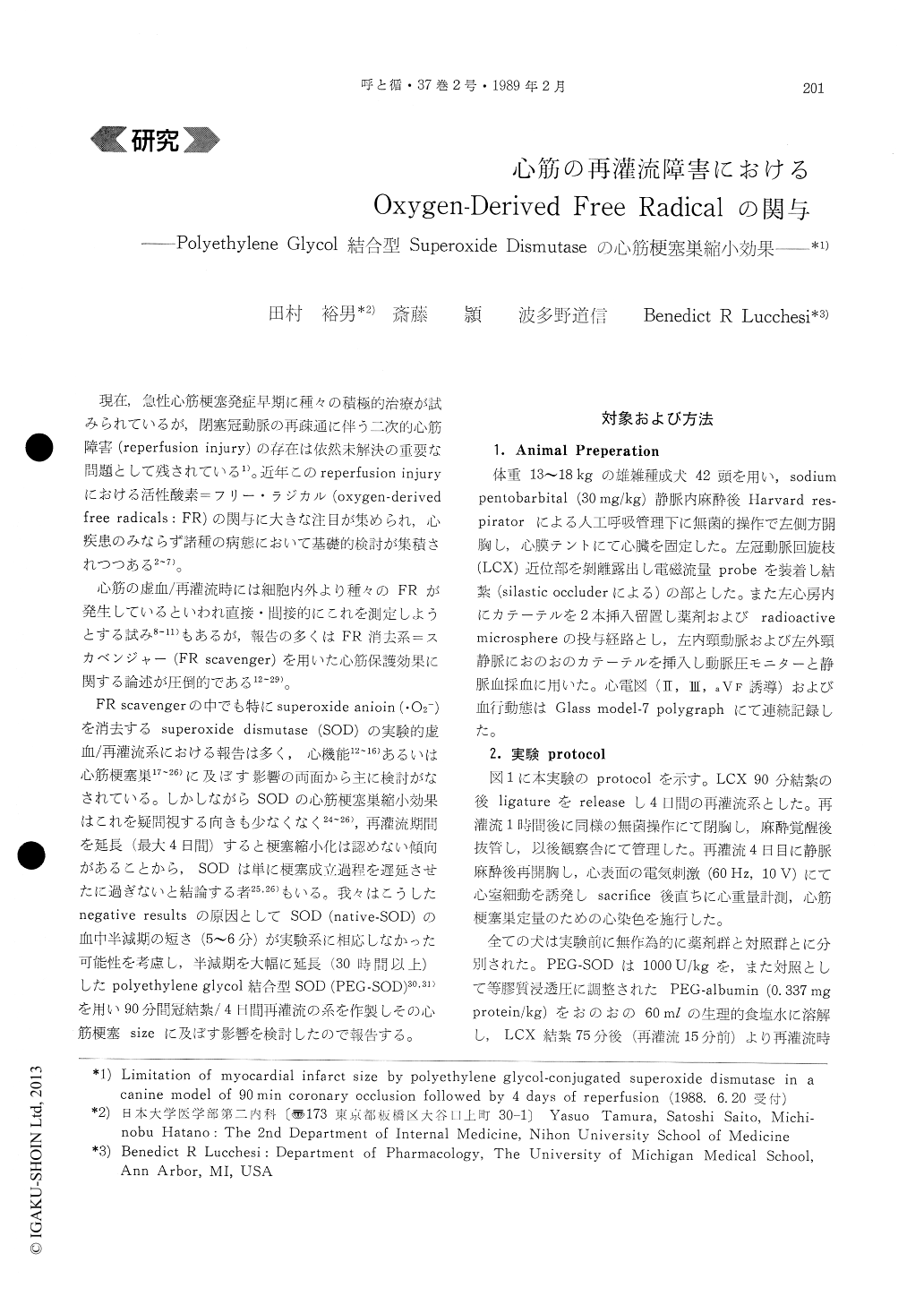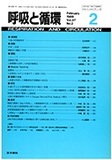Japanese
English
- 有料閲覧
- Abstract 文献概要
- 1ページ目 Look Inside
現在,急性心筋梗塞発症早期に種々の積極的治療が試みられているが,閉塞冠動脈の再疎通に伴う二次的心筋障害(reperfusion injury)の存在は依然未解決の重要な問題として残されている1)。近年このreperfusion injuryにおける活性酸素=フリー・ラジカル(oxygen-derivedfree radicals:FR)の関与に大きな注目が集められ,心疾患のみならず諸種の病態において基礎的検討が集積されつつある2〜7)。
心筋の虚血/再灌流時には細胞内外より種々のFRが発生しているといわれ直接・間接的にこれを測定しようとする試み8〜11)もあるが,報告の多くはFR消去系=スカベンジャー(FR scavenger)を用いた心筋保護効果に関する論述が圧倒的である12〜29)。
The role of oxygen free radicals in the genesis of myocardial reperfusion injury is supported by the studies with superoxide dismutase (SOD) which pro-vides protection against the extention of myocardial injury. However, the efficacy of SOD may be of limited value due to its short plasma half-life of 5-6 min. Conjugation of SOD to polyethylene glycol (PEG-SOD) increases the half-life to>30 hours.
Forty-two male, mongrel anesthetized dogs were subjected to occlusion of left circumflex coronary artery for 90 min followed by 4 days of reperfusion. Dogs were randomized to receive either PEG-SOD (1,000 U/kg) or PEG-Albumin via left atrium, start-ing 15 min before reperfusion and ending simul-taneously with reperfusion, and were sacrificed 4 days leter. The hearts were stained by ex vivo dual perfusion technique for the determination of myocardial infarct size.
In farct size expressed as a percent of area-at-risk in PEG-SOD (n=13) and PEG-Albumin (n=13) trea-ted dogs differed significantly between groups : 29. 2 -1.6% vs 44. 2±2. 6%, respectively (p<0. 01) with no observed difference in the size of area-at-risk : 46. 0± 1. 6% vs 44. 4±1. 4% (n. s.). Hemodynamic parameters between groups did not differ during coronary artery occlusion and could not account for the effect of PEG-SOD on infarct size. Collateralblood flows to the inner 2/3 of the ischemic myo-cardium for both groups did not differ. Plasma SOD activity in PEG-SOD group initially exceeded 20 U/kg and sustained significantly for 4 days.
Our results support previous positive observations that SOD is able to reduce infarct size associated with reperfusion. Previous negative studies with native SOD may be related, in part, to the short plasma half-life of its free radical scavenging capaci-ty. This defficiency is overcome by the use of con-jugated form of SOD which has a relatively pro-longed half-life, thereby preventing the extension of myocardial injury in the later phase of reperfusion.

Copyright © 1989, Igaku-Shoin Ltd. All rights reserved.


